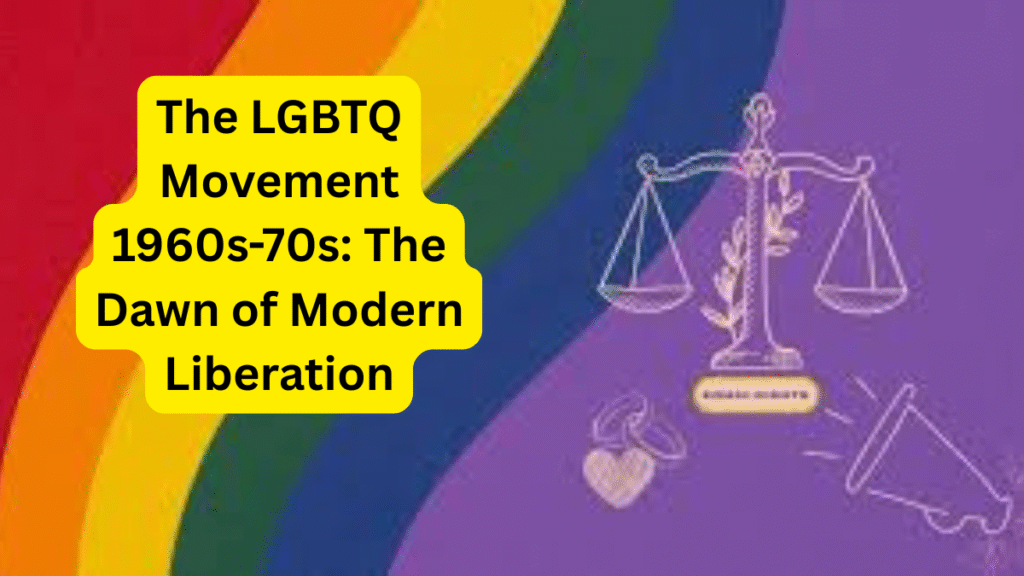The LGBTQ movement 1960s-70s was a period of radical transformation, marking the shift from quiet pleas for acceptance to loud, proud demands for liberation. This era, ignited by the 1969 Stonewall Riots, saw the birth of the modern gay rights movement, characterized by militant activism, community building, and a fundamental challenge to societal oppression. It was a direct response to systemic police harassment and social discrimination, laying the essential groundwork for all subsequent LGBTQ+ rights advancements. This article explores the pivotal events, key figures, and lasting legacy of this revolutionary decade.
The Foundations: Pre-Stonewall Activism
Before the explosive events of 1969, the groundwork for the movement was laid by earlier groups often referred to as the “homophile” movement. These organizations advocated for rights through education and peaceful demonstration, challenging the pathological view of homosexuality.
The Mattachine Society and Daughters of Bilitis
- The Mattachine Society (founded 1950): One of the first sustained gay male rights groups in the U.S., focusing on proving homosexuals were respectable and deserved equality.
- The Daughters of Bilitis (founded 1955): The first lesbian civil and political rights organization, providing crucial safe space and advocacy for women.
Early Protests and Actions
A key tactic was the “Annual Reminder” pickets, held from 1965-1969 at Independence Hall in Philadelphia. These silent, orderly demonstrations demanded equal treatment and set a precedent for public advocacy.
The Stonewall Uprising: The Spark That Ignited a Revolution
The single most catalytic event of the LGBTQ movement 1960s-70s was the police raid on the Stonewall Inn in New York City’s Greenwich Village on June 28, 1969. Unlike previous raids, the patrons—including drag queens, transgender women of color, and homeless youth—fought back.
Key Figures in the Resistance
- Marsha P. Johnson: A Black transgender woman and drag performer known as a central figure in the uprising and a beloved community activist.
- Sylvia Rivera: A Latina transgender pioneer and close friend of Johnson, who also played a pivotal role at Stonewall and fought tirelessly for the most marginalized.
The multi-night rebellion galvanized a new generation, transforming the movement’s strategy from assimilation to confrontation.
Building Power: Major Post-Stonewall Organizations
The energy from Stonewall immediately fueled the creation of new, radical groups dedicated to direct action and liberation.
The Gay Liberation Front (GLF)
Formed weeks after Stonewall, the GLF embraced a revolutionary platform. Their name, inspired by the Vietnamese National Liberation Front, signaled their solidarity with other anti-establishment movements, fighting for the complete dismantling of oppressive systems.
The Gay Activists Alliance (GAA)
Splitting from the GLF to focus exclusively on LGBTQ issues, the GAA perfected the “zap”—a confrontational, non-violent tactic of surprising public officials to demand attention for gay rights. They are credited with popularizing the Greek letter lambda (λ) as a symbol of liberation.
Lasting Legacy and Cultural Shifts
The activism of this era produced tangible results and a profound cultural shift. The first Christopher Street Liberation Day March was held on the first anniversary of Stonewall in 1970, evolving into the global Pride celebrations we know today.
| Era | Key Milestone | Impact |
|---|---|---|
| 1969 | Stonewall Uprising (June 28) | Catalyst for modern militant LGBTQ movement |
| 1970 | First Pride Marches (NYC, LA, Chicago) | Established a public tradition of celebration and protest |
| 1973 | APA Declassifies Homosexuality | Monumental victory against pathologization, influenced by activist pressure |
How to Research This Pivotal Era
Engaging with primary sources is the best way to understand this history. Here’s a step-by-step guide to conducting your own research:
- Start with Digital Archives: Visit the Digital Public Library of America (DPLA) or ONE Archives at the USC Libraries website.
- Use Specific Search Terms: Search for “Gay Liberation Front manifestos,” “Stonewall Riots photographs,” or “Sylvia Rivera speeches.”
- Explore Academic Journals: Use Google Scholar to find peer-reviewed articles on “1960s homophile movement” or “1970s lesbian feminism.”
- Visit Local LGBTQ Centers: Many physical community centers have historical libraries or can direct you to local resources.
- Watch Documentaries: Films like Stonewall Uprising (2010) or The Death and Life of Marsha P. Johnson (2017) provide powerful visual context.
Frequently Asked Questions (FAQ)
Q: Was the LGBTQ movement 1960s-70s only about gay men?
A: No. While gay men were often the most visible, lesbians and transgender individuals were instrumental. The Daughters of Bilitis was a lesbian organization, and transgender women of color like Marsha P. Johnson and Sylvia Rivera were at the forefront of Stonewall and subsequent activism.
Q: What was the main goal of the movement after Stonewall?
A: The goal radically shifted from assimilation to liberation. Groups like the GLF and GAA sought to end societal shame, confront oppression directly, and build visible, proud communities rather than just ask for tolerance.
Q: How did the movement address race and gender?
A: Initially, the movement was often dominated by the concerns of white, gay men. Women and people of color frequently had to fight sexism and racism within the community, leading to the formation of their own groups and movements.
Q: What is the connection between this era and modern Pride?
A: The first Christopher Street Liberation Day March was held on the one-year anniversary of the Stonewall Riots (June 1970). This annual commemoration directly evolved into the global Pride celebrations we know today.
Continue Your Journey of Discovery
The fight for equality is built on the foundation of history. To dive deeper into the stories and strategies of the brave activists from the LGBTQ movement 1960s-70s, visit the LGBTQ History Archive on our website or contact your local LGBTQ community center for educational programs and resources.
Contact & Resources:
- ONE Archives at the USC Libraries: https://one.usc.edu
- GLBT Historical Society: https://www.glbthistory.org
- National LGBTQ Task Force: https://www.thetaskforce.org
#Stonewall #LGBTQHistory #GayLiberation #Pride #Activism #1960s
